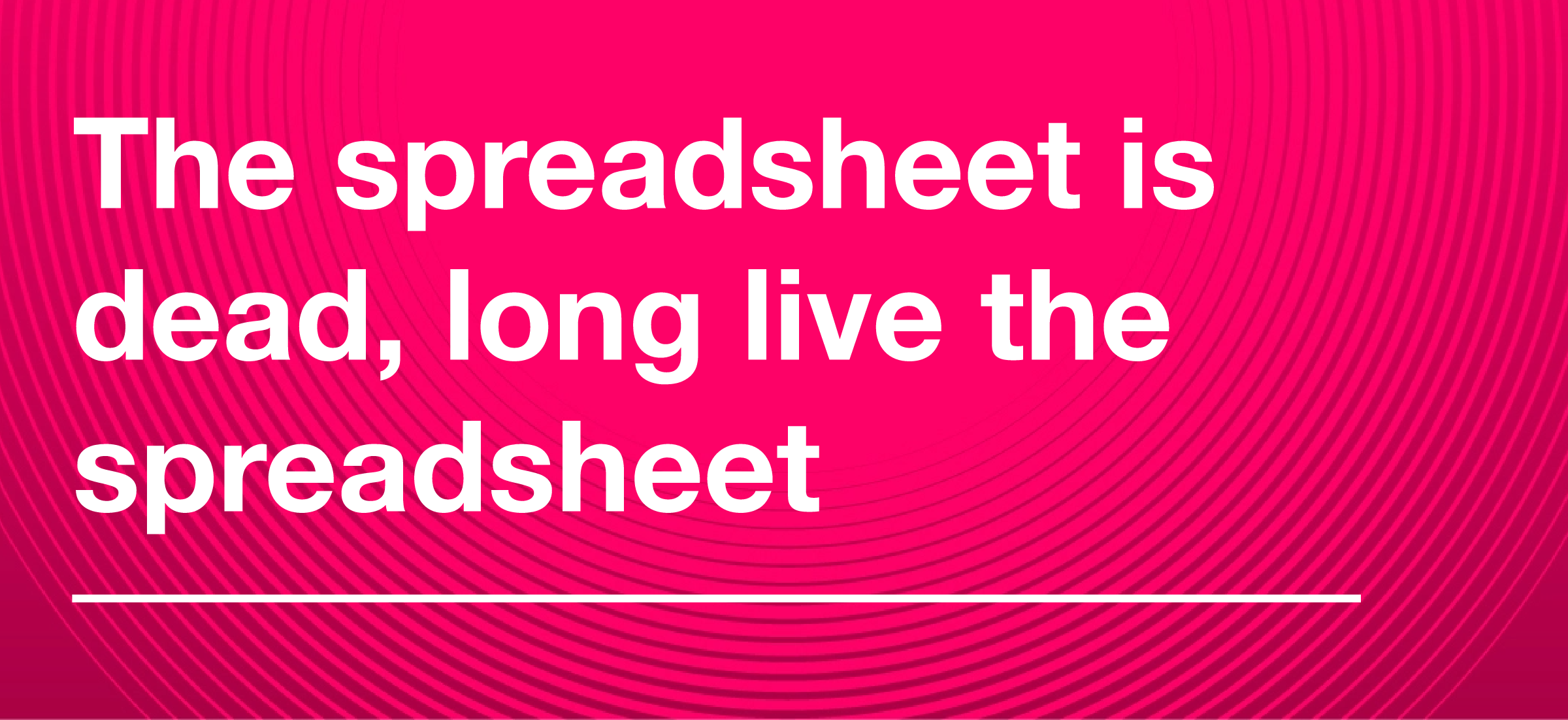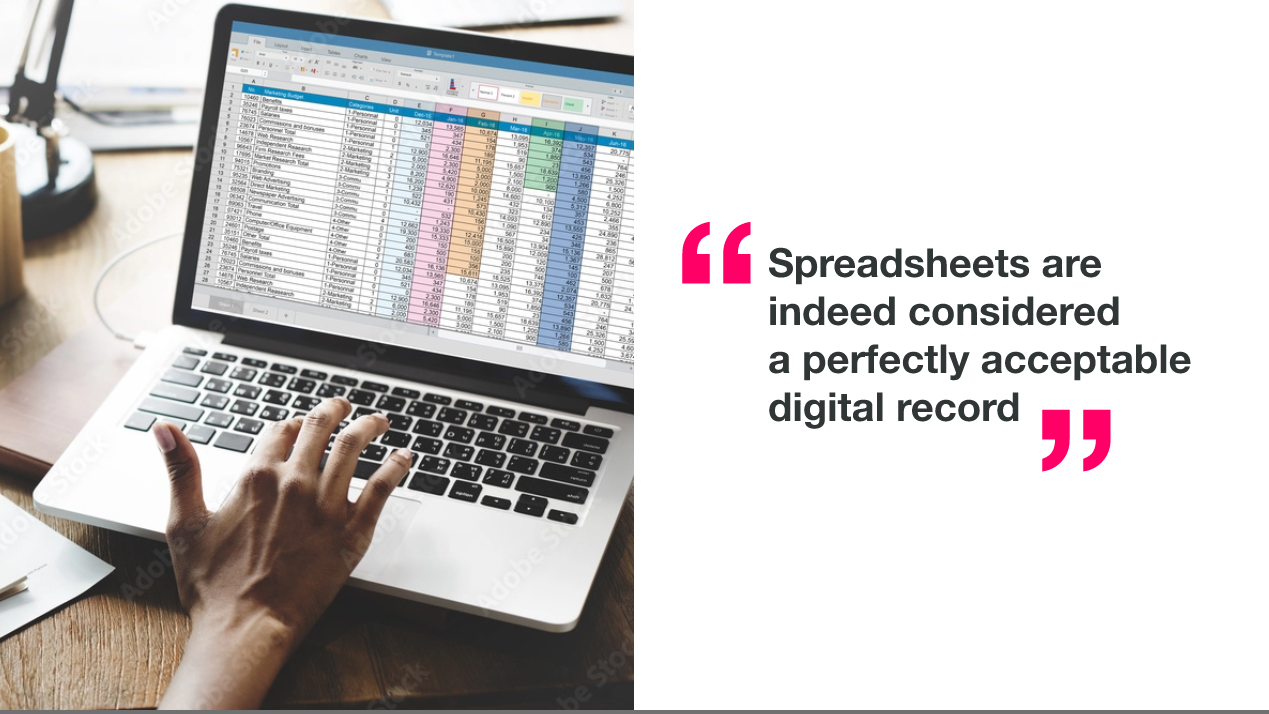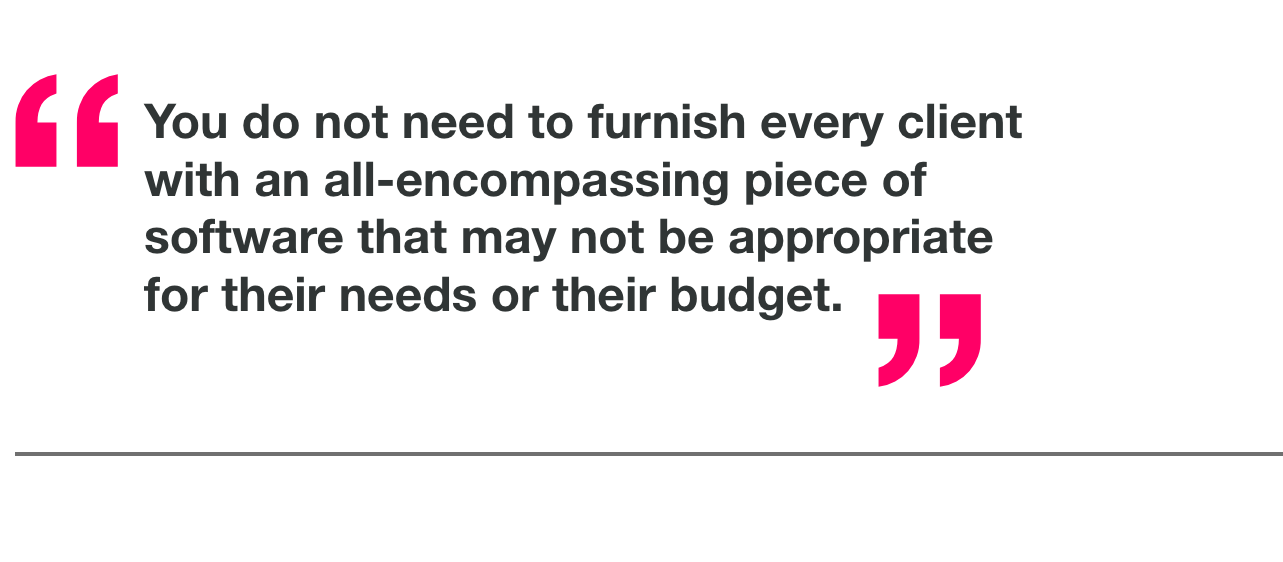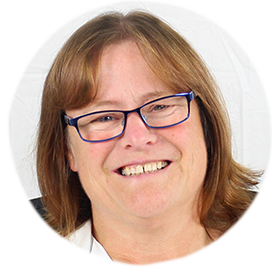TaxCalc Blog
News and events from TaxCalc
The spreadsheet is dead, long live the spreadsheet

In 2015, then Chancellor of the Exchequer, George Osborne, announced the biggest change to the UK tax system since the introduction of Self Assessment, as he declared "the death of the annual tax return" accompanied by "a revolutionary simplification of tax". Neither has yet to be delivered but, if you look past the headlines and rhetoric, HMRC’s Making Tax Digital programme is less about making tax digital and more about making bookkeeping digital.
If you listen to commercial radio, you’ll no doubt have heard cloud bookkeeping providers’ advertisements trying to persuade the unanointed that Making Tax Digital, rather than spell the end of the tax return, will actually be the death of the spreadsheet. Cynics amongst us may suggest they have a vested interest in disseminating that myth.
Well, if the spreadsheet is dead, long live the spreadsheet. A new era is about to begin.
As a practicing accountant and technology advocate for over 20 years, I’m a firm believer in using the right tools for the job. In my practice, as much as I had a preference for certain bookkeeping solutions, I knew they were not right for every client. And for some, perhaps many, the humble spreadsheet was indeed the right tool. Why? Because spreadsheets are quick to learn, quick to complete, quick to navigate and, most importantly, quick to identify and correct the myriad of errors a novice bookkeeper (most often the client) will undoubtedly create.
However, they are not great for collaborative working, automated processing, matching transactions or integrating with other systems – so choose your application wisely. I used spreadsheets most predominantly with simple self-employed businesses and property landlords, for whom an all-singing, all-dancing bookkeeping application would not have added sufficient value for the client to warrant the additional investment in time and money.

Does any of this change under MTD for Income Tax Self Assessment (ITSA)?
In short, no. In fact, the demand for spreadsheets may increase significantly given the numbers of property landlord ‘businesses’ who will be required to go from keeping virtually no bookkeeping records to having a legal obligation to do so from April 2024. As HMRC has no plans whatsoever to provide any software solution themselves to such businesses, it will be for those individuals to determine the best solution for themselves. Neither Microsoft nor HMRC are likely to be running radio ads sounding the virtues of the spreadsheet either.
In fact, HMRC had to make a swift U-turn on this very issue as it was their original contention that spreadsheets would not meet their criteria for what constitutes a digital record. This is indicative of the oft narrow thinking that exists within the public sector through a lack of exposure to the commercial realities of business and technology. Thankfully, they now take every opportunity to reinforce the decision that spreadsheets are indeed considered a perfectly acceptable digital record and that they have no plans to revert to their previous line of thinking on the matter.

What constitutes a digital record?
If you look hard enough, the answer can be found in VAT Notice 700/22: Making Tax Digital for VAT . Strictly speaking, there will be separate notices for MTD for ITSA, and indeed MTD for Corporation Tax, both of which are to follow, but the basic digital record-keeping requirements within those forthcoming notices are unlikely to diverge significantly from those within the VAT notice.
Firstly, you need functional compatible software . This is defined as a single, or collection of multiple, software programs or applications that are capable of recording and preserving digital transactions and communicating with HMRC using APIs.
The important point here is that multiple applications can be used to achieve all necessary tasks. You can therefore record all your transactions in a spreadsheet and then use bridging software to submit the totals to HMRC. You can even export the information from one application, perhaps as a CSV file, and then import it into another in order to file with HMRC. You do not need to furnish every client with an all-encompassing piece of software that may not be appropriate for their needs or their budget.
The only requirement is that any applications forming part of the functional compatible software must preserve a digital link , ensuring there is no manual re-keying involved in the transfer of information between multiple applications.
HMRC explicitly states in VAT Notice 700/22, that the following are acceptable:
- Emailing a spreadsheet containing digital records, so the information can be imported into another software product
- Transferring a set of digital records onto a portable device (for example, a pen drive, memory stick or flash drive) and physically giving this to someone else, who then imports the data into their software
- XML, CSV import and export, and download and upload of files
What is required to be stored digitally?
Information that is sufficient to support the submission being made. For VAT this is simply:
- Time of supply (date);
- Value of supply (amount); and
- Rate of VAT charged.
If you have that information for both supplies made and supplies received, then you can derive all the necessary totals to support the submission of your VAT return.
Although HMRC is yet to release a formal guidance notice for MTD for ITSA, the minimum record-keeping requirement will be the date, the amount and the category of each business transaction.
This will allow the reporting of summary totals broadly in line with the income and expense categories itemised on today’s supplementary tax return pages for self-employment and land & property.
What is not required to be stored digitally?
Anything superfluous to the reporting requirement, including:
- Digital copies of invoices and receipts;
- Customer or supplier statements;
- Bank statements;
- Payroll records; and
- Detailed calculations.
Although you may of course choose to keep all of the above digitally if you prefer.
Yet to be clarified by HMRC is whether they expect a digital link to be maintained between the bookkeeping records and the final accounts figures.
The detail of such adjustments is often contained within the accountants' own working papers with only aggregated balance sheet journals being posted back to a clients bookkeeping system post year-end. This begs the question of whether HMRC expects, not only that digital links are maintained throughout the working papers themselves, but that all the adjustments flow back into the clients bookkeeping at a transactional level to the profit and loss account in-year as well as the balance sheet. That could have a significant and, as yet unforeseen, impact on the time required to complete an accounts job. Particularly as posting year-end journals often falls by the wayside when you are already over budget by the time the client has signed off.
What is TaxCalc developing to assist with MTD for ITSA?
Similar to our MTD for VAT bridging solution – VAT Filer – we will also be releasing our MTD for ITSA bridging solution – Business Filer. This will allow any self-employed individual, or property landlord, to continue to maintain their records on a spreadsheet and use TaxCalc to report a quarterly summary of those transactions to HMRC.
The end of year tax filing process – End of Period Statement and Finalisation (or Crystallisation) – will all be possible within TaxCalc’s Tax Return Production software. Deadline monitoring, workflow management and reporting will be capably handled within Practice Manager; and client communications all automated from within our new Communications Centre.
Free MTD for ITSA and MTD for VAT spreadsheets
We have developed free, downloadable spreadsheets designed for you to use with your clients now to get an understanding of what will be required from April 2024 – or earlier if you wish to join the pilot scheme. Use as a model for your own spreadsheet or simply distribute to your clients to give them an idea of the options they have for digital record keeping under MTD.

Spreadsheets are available for:
- VAT registered businesses;
- Non-VAT registered businesses; and
- Property landlords.
Register below to download and receive your copy of these spreadsheets.




